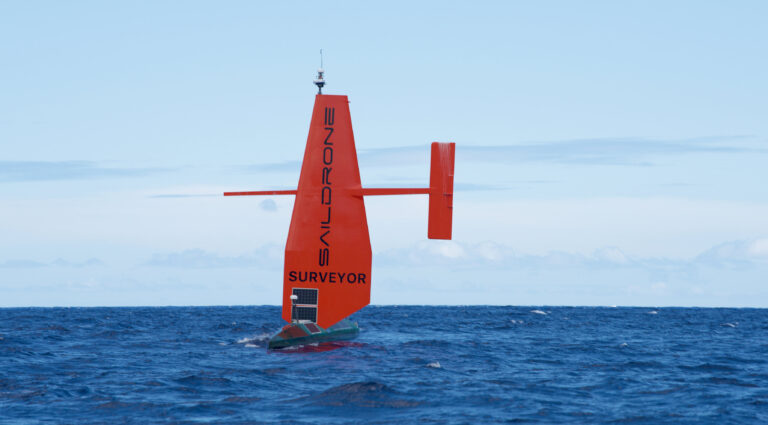The uncrewed, autonomous Saildrone Surveyor arrived in Hawaii last week after a ground-breaking maiden voyage from San Francisco, California, to Honolulu, Hawaii.
While ocean crossings are nothing new for Saildrone’s autonomous surface vehicles, the Saildrone Surveyor is a new, much larger class of vehicle optimized for deep-ocean mapping. During the 28-day voyage, the Saildrone Surveyor sailed 2,250 nautical miles and mapped 6,400 square nautical miles of seafloor.
Using renewable wind and solar energy for its primary power source, the Saildrone Surveyor is the only vehicle in the world capable of long-endurance, uncrewed ocean mapping operations, according to the company. The data it collects will help address issues impacting our world including climate change, offshore renewable energy, natural resource management, and maritime safety.
Measuring 72ft long (22 m) and weighing 14 tons, the Saildrone Surveyor carries an array of acoustic instruments, normally carried by large, manned survey ships. The Surveyor’s sensors interrogate the water column, looking at underwater ecosystems, and map the seafloor in high resolution to a depth of 23,000ft (7,000m).
Multibeam data from the Saildrone Surveyor has been calibrated and assessed by an external team from the University of New Hampshire (UNH), which normally calibrates large government survey vessels.
“The data quality from the Surveyor is of very high quality, as good as anything we have seen from a ship,” said Larry Mayer, director for the UNH Center for Coastal and Ocean Mapping (CCOM). “Due to the wind-powered nature of the vehicle, it is very quiet, and this enables the very accurate acoustic measurements needed to map to these depths.”
With this successful proof-of-concept voyage, Saildrone will now build a fleet of Surveyors to be manufactured at US shipyards. Saildrone intends to map the entire Earth’s oceans in the next 10 years.



